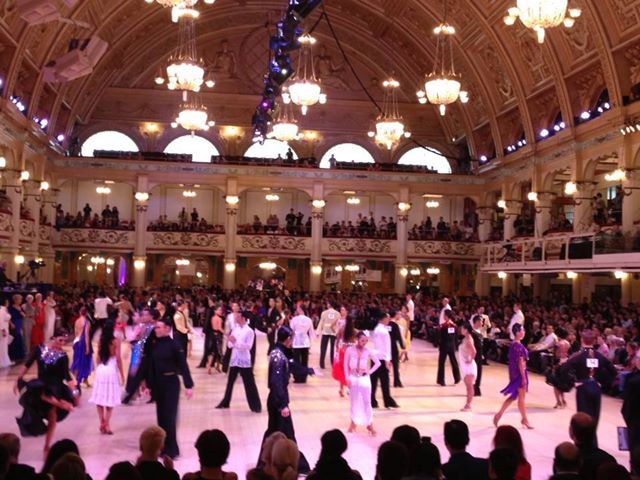 |
| internet source: Blackpool Dance Festival |
The biggest difference between Standard and Smooth is that the former requires the couple to be connected and maintained body contact with CBM. The Smooth can be open and away from the partner. The Standard aims to give an elegant look and demands a strong technically base. Standard instructors focus on the correct posture and teach figures precusely, there is little room for advanced variations compare to their counterpart.
On the other hand, since the Smooth doesn't demand the two people to stick together, there is more chance to show-off. However, it does not mean that the it is less technical. It is true that for new learners, the Smooth would be easier to pick up, however, if you want to be good, still you need to work hard.
Apart from the closed/open position, the two styles also vary in terms of characters. In general, the hold in American dances are mor relaxed and less framed, although couches say 'mind the posture', it mostly means to keep the spine upright, while the International instructors would mean to remain CBM and close contact in the lower part if the body.
Moreover, individual dances may demonstrate different personalities too. For example, American Foxtrot resembles more the Harry Fox, which is quick, but the International Slow Foxtrot is slow and elegant.
Also, figures are different. We have Natural Turn and and Reverse Turn in International Waltz and Foxtrot, but we can just see the Box steps in the American ones.
 |
| internet source: DVIDA |
As mentioned above, ISTD and IDTA are the two authorities we arw following. All teachers would take professional exams with them and earn a title of 'Associate', 'Licenciate' or 'Fellow'. The medal tests which are taken according to the Bronze, Silver, Gold and Gold Bar syllabus are for amateur dancers, and usually taken by children.
part 1- the two major styles
part 2- the difference between these two styles.
...............................................................